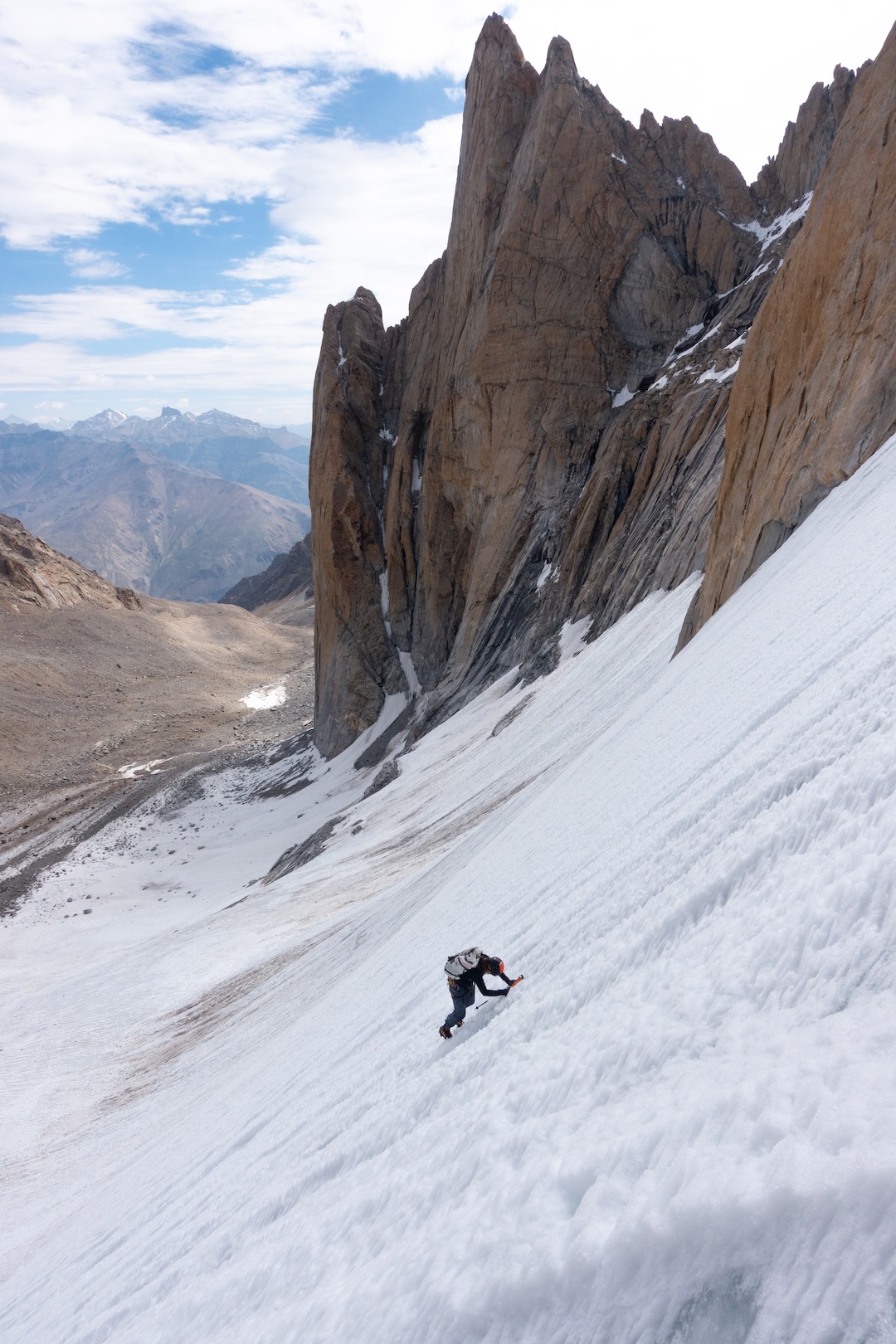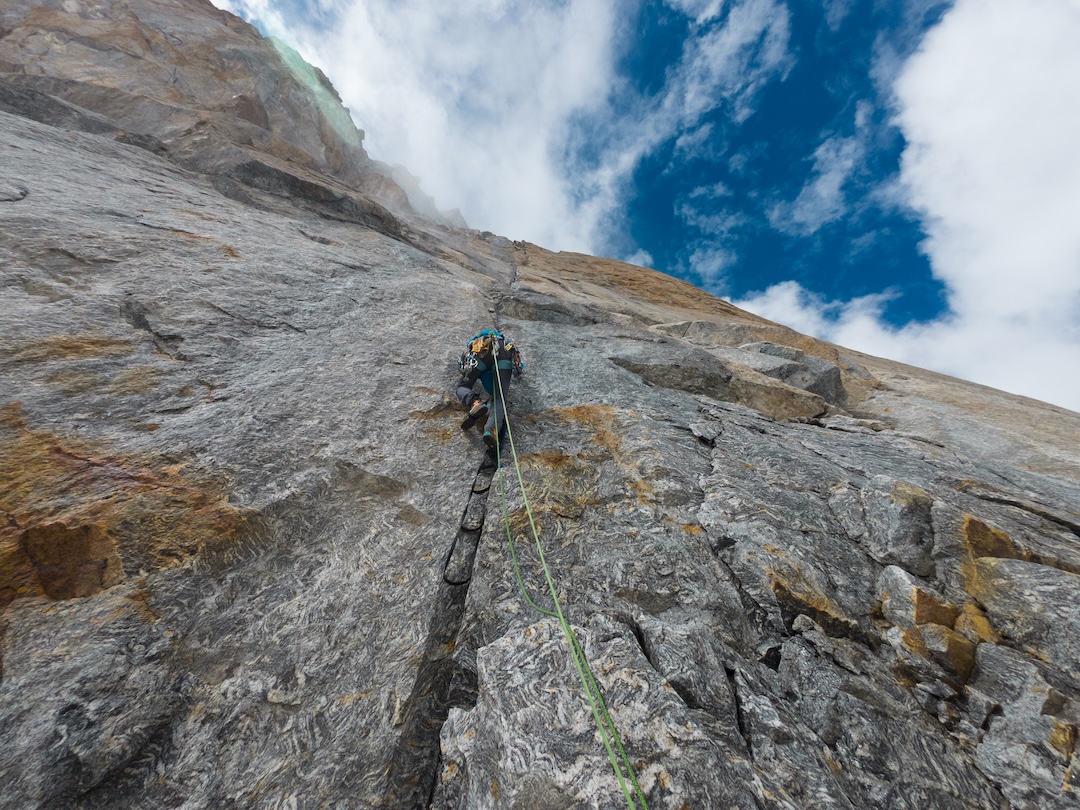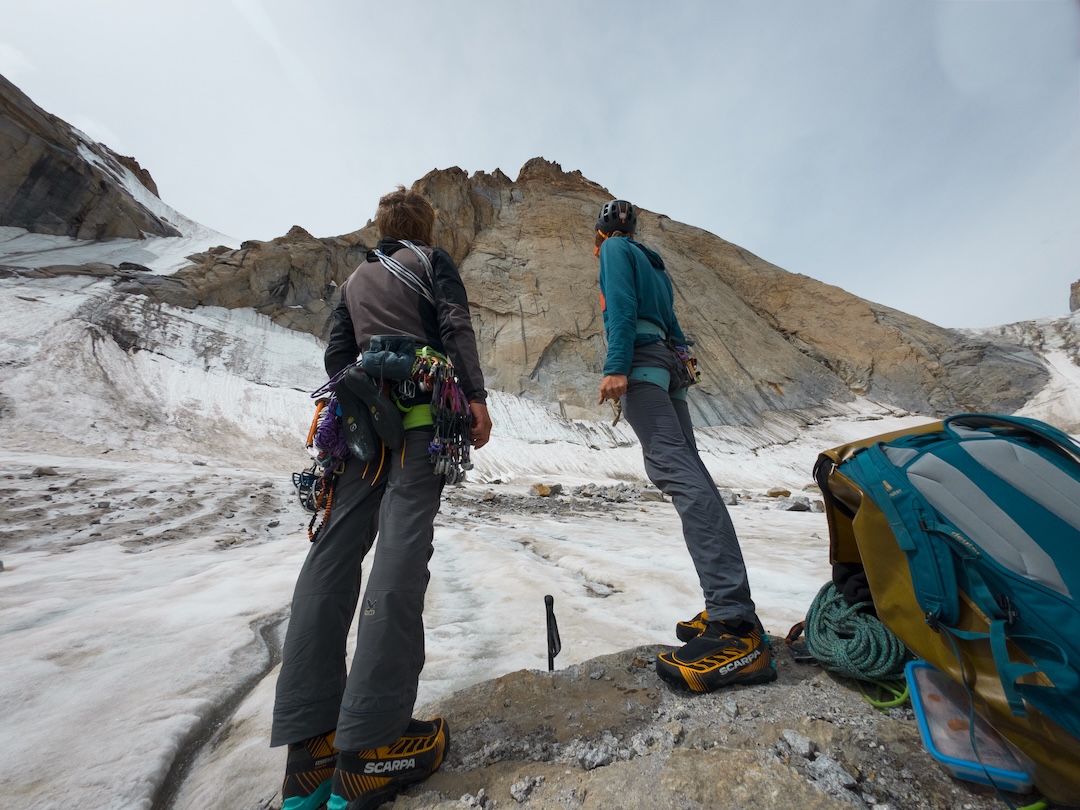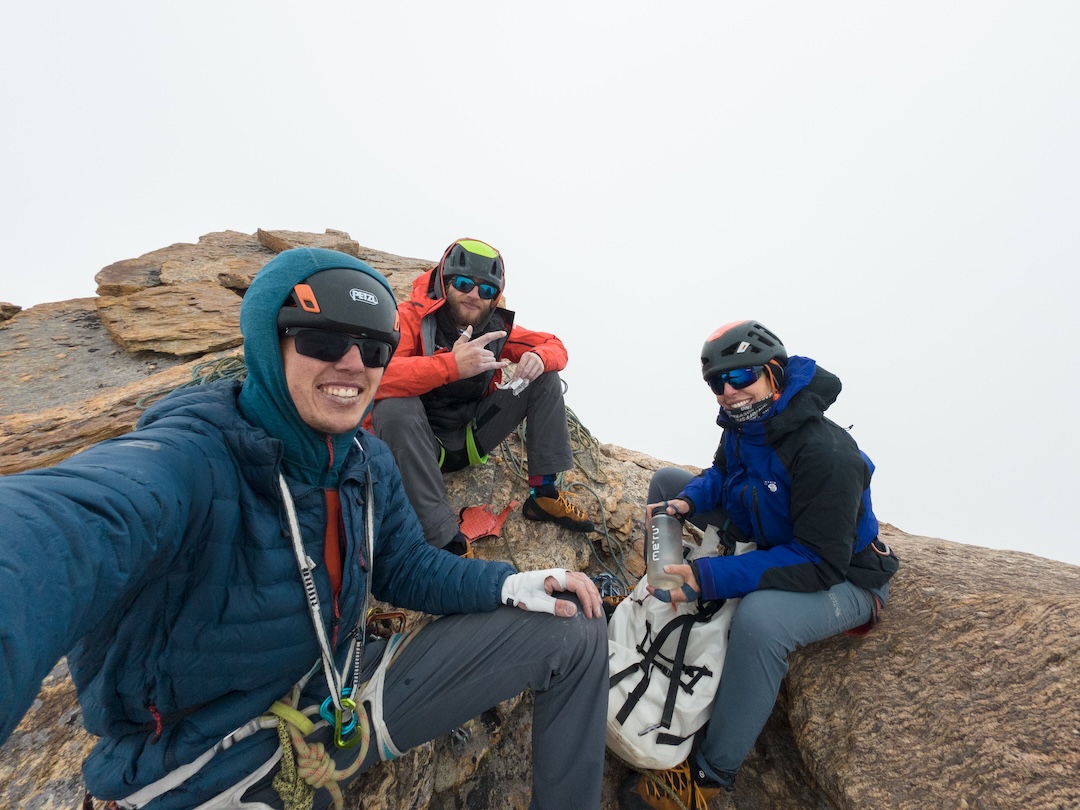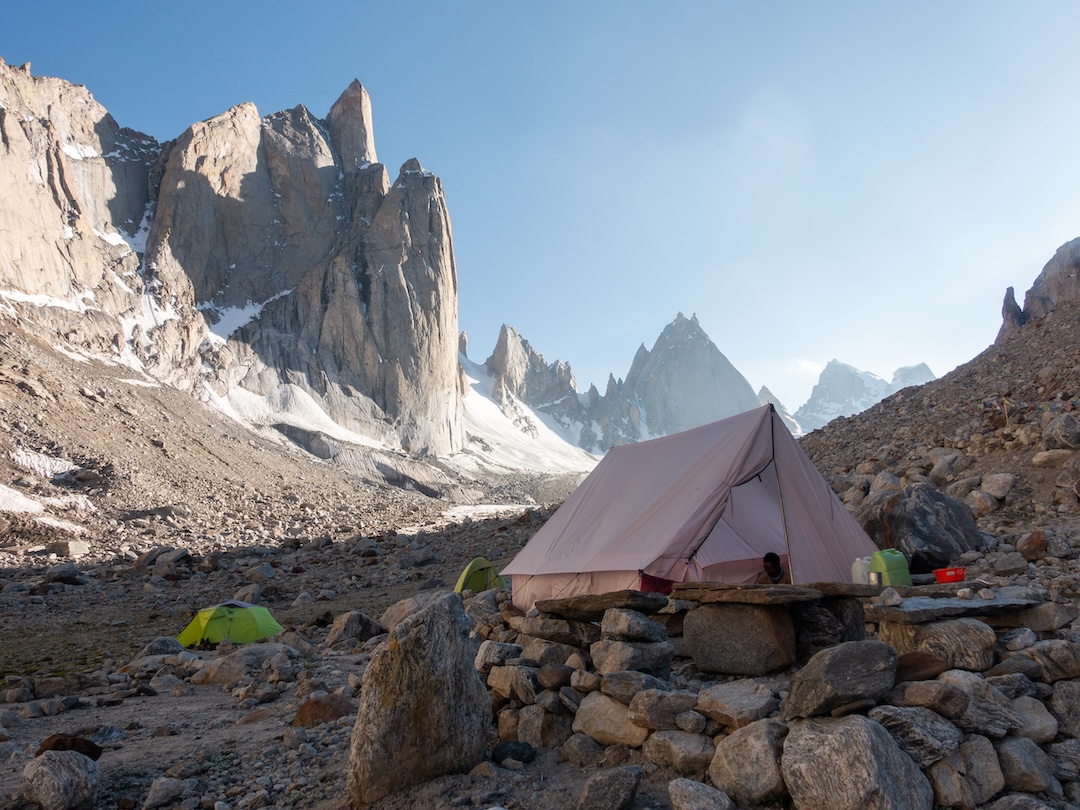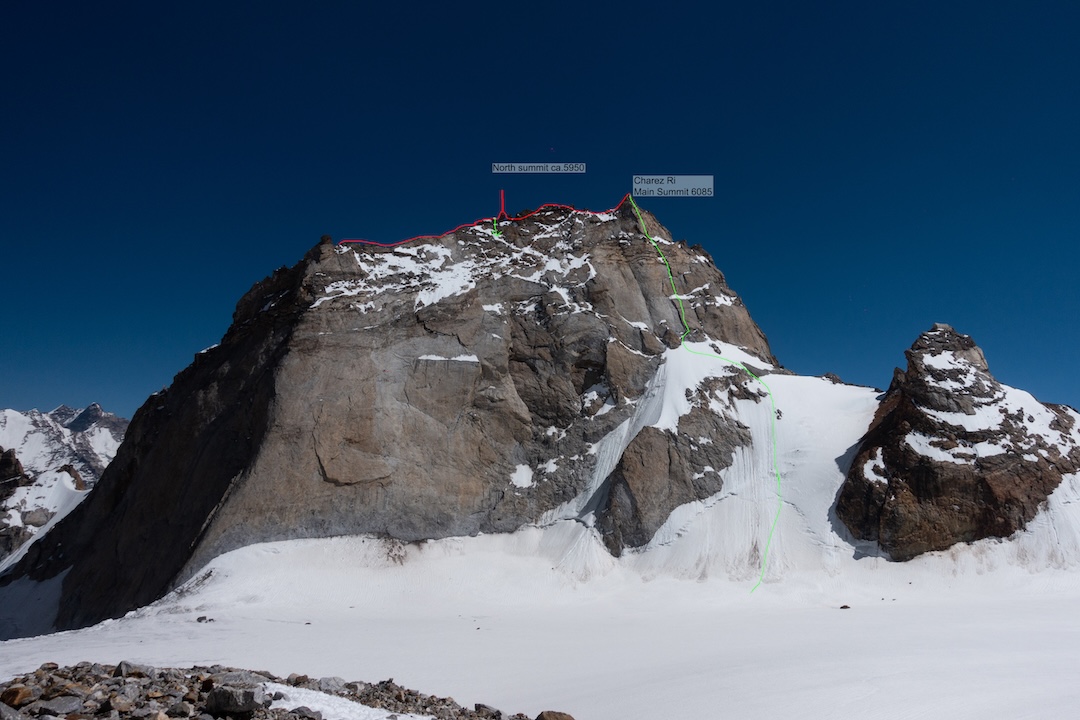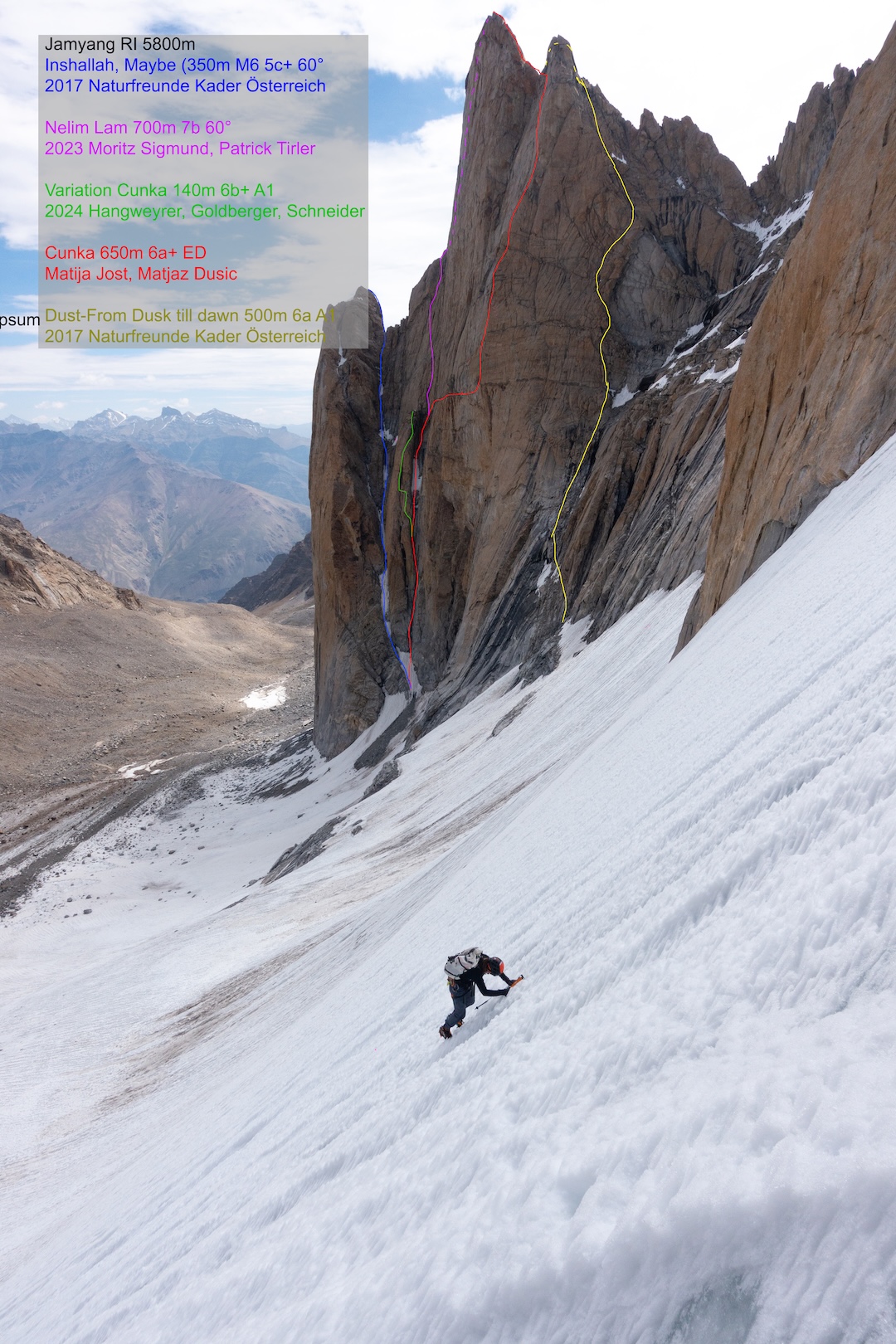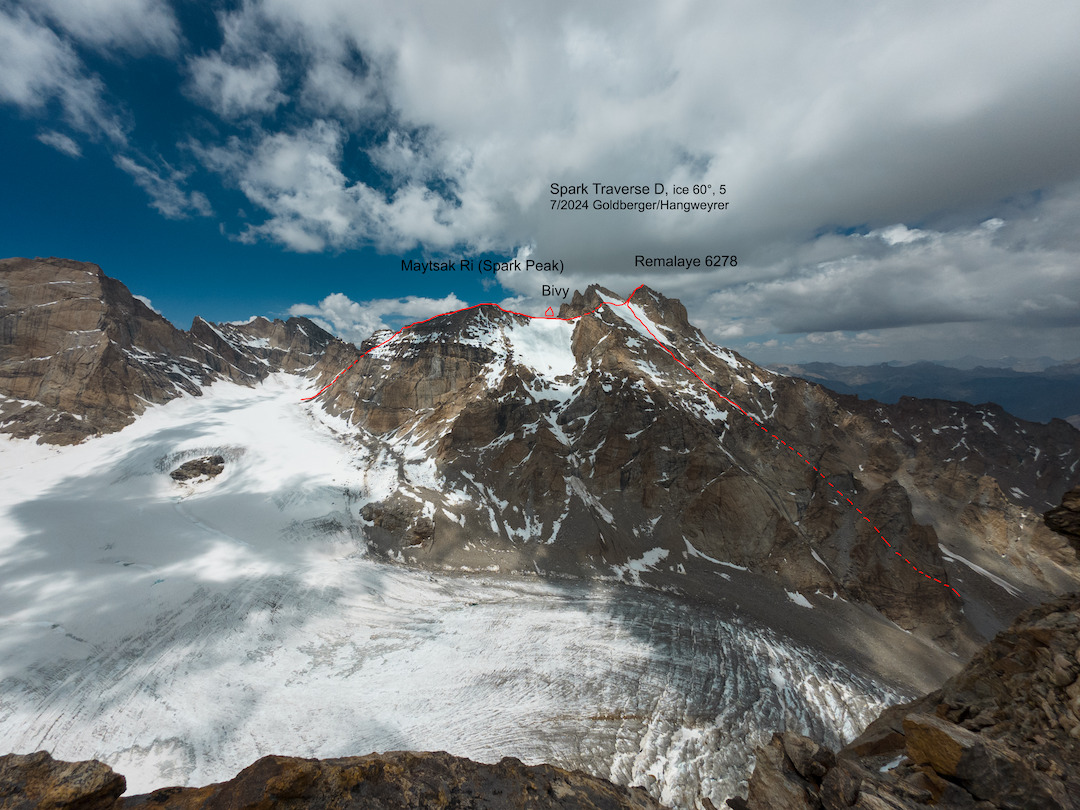Chanrasrik Ri, Spark Traverse, and Other Ascents
India, Ladakh, Zanskar, Rangtik Tokpo
From July 9 to August 15, our team of three ventured to Ladakh. After a three-day journey, we reached the small village of Tungri in the Zanskar Valley, where we were warmly welcomed. With the help of local porters, we ascended to a base camp at 4,925m and subsequently spent 28 nights above 4,900m.
After an acclimatization phase, on July 21 we repeated the route Rolling Stones (Pellissa-Ricart, 2008; AAJ 2010) on Shawa Kangri (5,728m) as a team of three.
On July 23–24, Hangweyrer and Goldberger climbed the southeast face (D+, Dušič-Jošt-Žerovnik; AAJ 2018) of Remalaye/H5 (6,278m). They then traversed west toward a previously unclimbed top, which was later named Maytsak Ri (“Spark Peak,” 6,060m, 33°28’46”N, 76°43’18”E) after consulting with locals. After bivouacking at a col at nearly 6,000m between the two peaks, the duo reached Maytsak Ri on the second day of the traverse. From the top, they continued 300m to the west and descended through a couloir leading to the westernmost section of the Rangtik Glacier. The Spark Traverse was D, UIAA V 60° ice. [Editor’s Note: The team did not summit Remalaye West (6,266m; AAJ 2018), which sits along the ridge between Remalaye and Maytsak Ri.]
Following a rest day in base camp, Schneider and Hangweyrer attempted the vertical to overhanging northeast face of Chanrasrik Ri (6,080m, 33°27’41”N, 76°43’17”E; this peak was formerly known as Chareze Ri; see AAJ 2024). After climbing an A3 pitch in a prominent crack, they realized their intended style was too light and retreated. Since it was still early in the day, they scoped out a chimney system 60m to the left for a potential subsequent attempt. After four pitches up to UIAA V+, they descended to base camp.
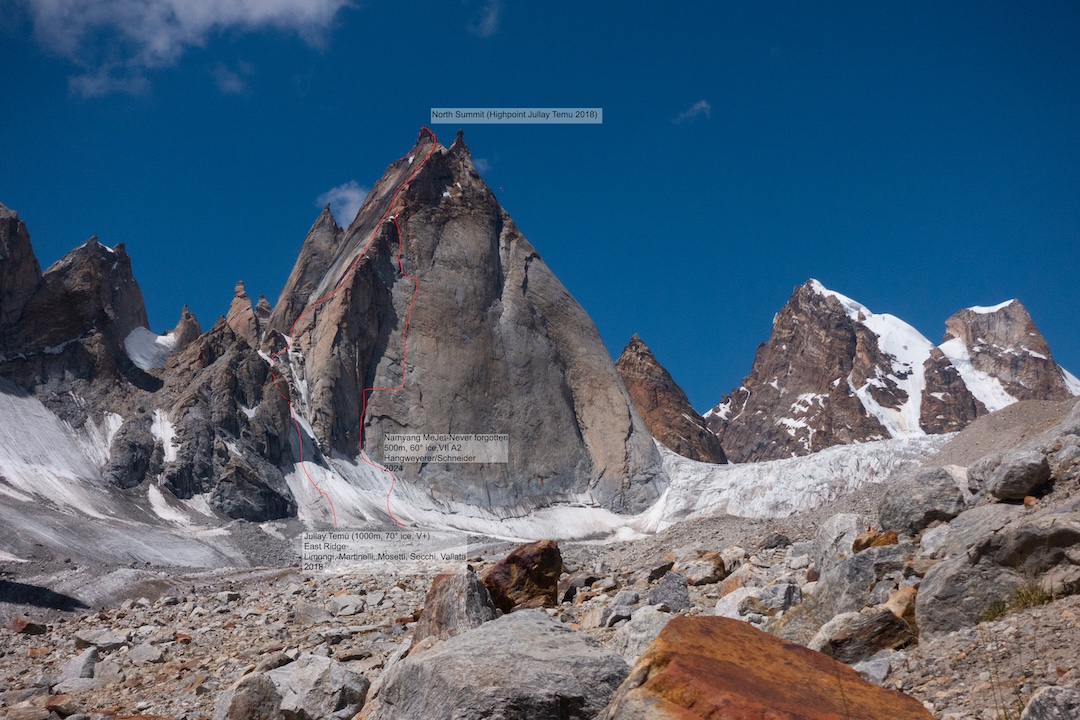
On July 28, with a 3:30 a.m. start from their tent at the base of Chanrasrik Ri, Schneider and Hangweyrer repeated the route Jullay Temù (1,000m, UIAA V+ 70° ice, Limongi-Martinelli-Mosetti-Secchi-Vallata, 2018; AAJ 2020) and continued to the main summit of Chanrasrik Ri, completing the first ascent of the mountain. The Italian team in 2018 had climbed the ridge bordering the left edge of the northeast face, then traversed the sharp ridgeline southward, crossing over a central top before running out of daylight and bailing down the northwest face. Schneider and Hangweyrer were able to continue south past the central top to the previously unclimbed summit of Chanrasrik Ri. They rappelled the west face and reached base camp by 11 p.m. [Editor’s Note: The Italian team’s report in AAJ 2020 refers to the central top as the north summit (5,959m) of Chanrasrik Ri. In fact, there are three prominent tops along this ridge, so we are referring to the 5,959m spire, summited in both 2018 and 2024, as the central top. Both parties bypassed the northernmost pinnacle on the ridge.]
At the end of July, we made two attempts on the northwest side of Jamyang Ri (5,800m), climbing three new pitches as a variation to Cunka (Dušič-Jošt, 2017), but our efforts were halted by poor rock and bad weather. On August 3, all three of us repeated the route Treasure of Zanskar (750m, ED+, Dušič-Jošt-Žerovnik, 2017) on Chakdor Ri/H8 (6,193m).
With the northeast face of Chanrasrik Ri still in mind, Schneider and Hangweyrer made a second attempt, this time in big-wall style. On the first day, August 6, they carried gear to the base of the wall and climbed the previously ascended chimney system. After a portaledge bivy in an overnight snowstorm, they started again at 10 a.m., climbing five technical pitches and fixing ropes for the next day. After another night at the same portaledge camp, they ascended the fixed ropes and climbed three additional pitches to reach the ridge on the left side of the face (the same ridge climbed by Jullay Temù). Having only planned to go this far, they rappelled their route and returned to base camp. They named the route Namyang MeJet (“Never Forgotten,” 400m, 11 pitches, UIAA VII A2 60° ice). They placed a single anchor bolt.
The expedition exceeded all of the team’s expectations. We thank the Deutscher Alpenverein and Österreichischer Alpenverein for support.
—Lea Goldberger, Elias Hangweyrer, and David Schneider, Austria and Germany


